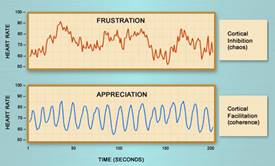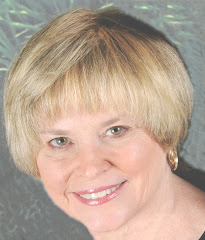HERE'S THE GOOD NEWS
ABOUT ANGER ...
 ~ By Russell Bishop ~
~ By Russell Bishop ~
Anger Is Not a Primary Response
Have you ever been upset with someone and told them off - in your mind? You know the drill - you imagine talking to the person, perhaps rehearsing what you might say were you to actually talk to them, and you wind up filling in the blanks for what they might say as well. That, in turn, leads to how you would respond to what you just made up for them to say. And on it goes.
How often do we start with something that has some basis in fact, and then add elements to the story that we just make up? If you rehearse the scene enough, it will begin to take on its own element of truth. If you tell the story with enough conviction, you can wind up with very real feelings, both emotionally based and even physically based. You can scare yourself by what you tell yourself, and you can become angry by what you tell yourself.
What makes this practice so difficult is that by the time you have added emotional and physical feelings to the story, they actually begin to take on an element of reality - after all, you are feeling these feelings, aren't you. For some, the presence of the feelings suffices for proof that the situation and their response is, in fact real. The Truth, as it were.
When we started a series on the differences between positive thinking, positive focus, and positive action, we suggested that a positive focus (not wishful thinking, but focus on a realistic, positive outcome) can help you discover choices you can make that can help lead you forward. That's a form of telling yourself a story, albeit a story that might prove useful in terms of encouraging you to move forward.
Many of us know the opposite version of this kind of storytelling. Have you ever imagined yourself about to embark on a new experience and started to tell yourself all the things that might go wrong? That could be anywhere from the time you were on a high diving platform and scared yourself thinking about all the things that could go wrong, over to imagining a conversation with your boss and imagining how badly that might go. Instead of a raise, they might fire you.
If you're like most people, you have engaged in this kind of negative storytelling, either about someone else, or about your own self. The latter is the most interesting. As my mentor used to say to me when I would give voice to my negative thinking: "Russell, if you're going to indulge in a fantasy, why would you choose to lose in it? After all, it's your fantasy!" The great thing is that everyone's right! If you find this approach to self-awareness useful, then it's useful! If you don't, then it's not.
One reader shared an interesting
awareness about anger:
"Russell, Looking at the comments, your article got some people thinking. The part on fantasy conversations reminded me a recent occurrence. Perhaps you'll find this interesting. I'm not at all good at putting things behind me. Often I'll engage in fantasy conversations, reliving and revising events from the past, or inserting events into the past. Usually they're negative, instances where I felt mistreated or dismissed. And emotions get stirred up, often anger.
"The other day I was having such an adventure, and feeling angry, and I thought "as if being angry will change anything." Then there was a brief glimpse, with the sense that this was a glimpse into something that was really there, that at some lower level I really think this way - that being angry will change it. Or that the fantasy conversations will change what has occurred. An insight, and like I said, I trust that I was seeing something that's really there.
"It makes me wonder how much we operate on the basis of something irrational, that we know is irrational. This one - that I can change the past by replaying it or emoting on it - doesn't come from upbringing or past experience; it's something I conjured up myself. Creating my own little world which is preferable to the real one, and refusing to accept, on some lower level, that the real world isn't going to be changed. I'm pretty sure this is far from unique to me; I'd guess we all do something like this. But it's very difficult to notice. Those little glimpses don't happen very often." --Chip
Nice awareness, to be sure. I know I have found myself trying to change the world, the situation or someone else by being angry. I have tried expressing the anger to get someone or something else to change, I have tried keeping it bottled up, I have tried seething inside, telling myself stories about how unfair life is, or how the other person should be different. I've tried all kinds of approaches with anger. Not terribly effective in my experience.
 Have you ever been angry about
something you don't care about?
Have you ever been angry about
something you don't care about?
Careful, now - this could be a trick question. I have posed this question to thousands of people. Most, after considering the question for a few moments, realize that indeed, the only things they get angry about are things they care about. After all, if you don't care, you simply do not care. As in, no caring. Doesn't matter. Zip.
I have learned that the often unspoken message in the anger has to do with how much something matters. For many, the underlying message in the anger goes something like this: if you cared about (me, others, the situation), you would be different (do it my way, not do it your way, etc). It's as though the anger is supposed to make the situation change, or the other person behave differently. Sometimes it appears to work, at least in terms of intimidating someone else. Then there are all the other times.
While far from easy, I do my best these days to look past the anger and inquire into the caring. I try to approach the situation with this internal thought process: Clearly, this is upsetting to you and it matters deeply. What is it that is important to you here? Is there something that I'm doing that goes against what you care about?
Obviously, these pretend words are a bit clinical, but perhaps you get the idea. I'm trying to understand what's behind the anger. It's pretty difficult to deal with the emotion of anger in any meaningful way, yet if I can understand the underlying message of caring, there just may be something that I can address.
Have you ever been upset with your husband/wife/lover or other stranger, and then gone about your day "showing them" just how upset you are by remaining angry? Even when they're no longer present? That's just great isn't it? They're supposed to be different because you're angry? Or at least they should feel punished by us staying angry? We've all heard the old saying about "stewing in your own juices." This is one version of stewing.

One of my favorite quotes, attributed to many,
ranging from St. Augustine to Nelson
Mandela, goes something like this:
"Resentment is like drinking poison
and hoping the other person dies."
I've previously shared a turning point in my life, on a strike line at UC Berkeley many years ago. I was hit by a tear gas canister, picked it up to throw it back (no one told me how hot a canister can be), and had a brief moment seemingly outside my body where I could see and hear myself. I was clearly very angry, and I heard myself screaming, "why don't you a**holes love us?" Then, boom, right back in the old body. This time, with wave after wave of awareness washing over me: my message was one of peace, love and caring while my strategy was to yell, scream and throw things.
Are you trying to create a better life, experience or world through your anger? If so, what is it you care about so deeply that you would take that poison into yourself? What would you like to have change or be different? How could you work more directly or effectively to produce that kind of change? Some good advice might be found from Alexander Solschenizyn who said something to the effect of: if you would put the world to rights, with whom would you begin? Yourself or others?
A great question, to be sure. Of course, you could always come to the realization that the other person or situation will not change. Then you get a choice: accept what's present, change your reaction, or perhaps just leave. Winston Churchill had an interesting thought on the subject. I'm pretty sure this will not pass the muster of historical context, but it's revelatory in some ways, with a twisted sense of humor:
Lady Nancy Astor to Churchill:
"Winston, if you were my husband,
I'd poison your tea."
Churchill's reply:
"Nancy, if I were your husband, I'd drink it."
Russell Bishop is an Educational Psychologist,
professional life coach and management consultant,
based in Santa Barbara California. You can find out
more about Russell at http://www.russellbishop.com/
Reprinted from HuffingtonPost.com





















































